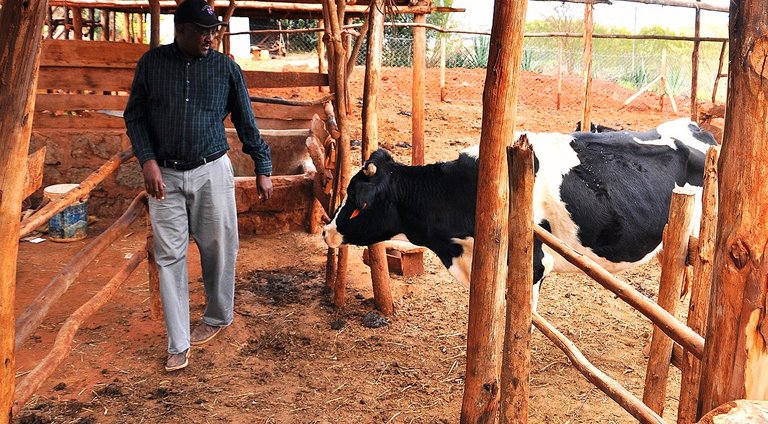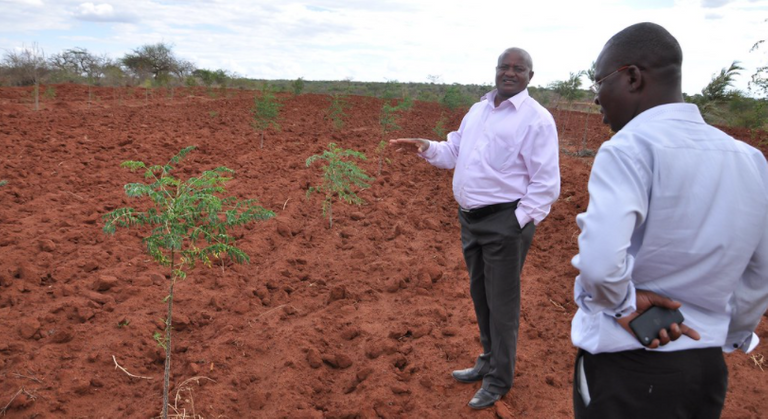Introduction
The hoe is for cultivating, the water can for watering, the cutlass for getting rid of the grass, and the sickle for harvesting. Of course, this was all once upon a time and while you might use these to tend to your garden they no longer have a place in large-scale agriculture. You can say there has been a shift to make agriculture better all-rounder due to the advent of smart agriculture.
Smart agriculture is the utilization of new-age technology such as sensors, the internet of things, location systems, artificial intelligence, and even robots in agriculture. The major goal of smart agriculture is to improve the quantity and quality of farm produce. It also seeks to optimize human labor used in the agricultural process.

Modern tools and techniques
Nowadays, large-scale agriculture is carried out smoothly and efficiently. There have been different inventions from greenhouses to sensors, which have made growing a variety of plants a bit of a walk in the park. Greenhouses have existed for a while but there are much more recent tools and methods. Let us begin with good old sensors.
Sensors
To make sure crops grow at optimum conditions sensors are used in measuring different factors such as pH and CO2 level. If the level detected is too low or too high changes are made to get the factor back to the optimum level. In agriculture five major sensors are used:
pH sensors: these sensors are used in measuring pH which helps in determining the state of the soil. It would detect different issues such as nutrient deficiency which would hinder plant growth.
GPS sensors: you might be wondering what on earth GPS sensors are doing on a farm but they are useful. These sensors help in directing the movement of vehicles such as tractors used in harvesting. This automated guiding system helps to decrease work overlap, improve field routing, and save time.
Temperature sensors: temperature is a very important factor in plant growth as it greatly impacts enzymes that catalyze various reactions in plants. One very common example is ice wine which can only be harvested within the -10 degree Celcius to -12 degrees celsius. In such cases, temperature sensors are a must-have.
Asset monitors: in smart agriculture not only harvested products are monitored. Instruments used in harvesting are also monitored with sensors such as temperature sensors which send out signals whenever any instrument has to be maintained or repaired.
Smart cameras: trained and highly intelligent cameras are used to accurately pinpoint the location of weeds, plants, and even pests. This way chemicals like fertilizers, herbicides, and pesticides can be dispensed to needed areas. This process helps to reduce wastage and improve chemical use.
Software Platforms
These platforms are integral to the farming industry today especially since the world is currently in the information age. Software platforms for smart agriculture focus on centralizing, managing, and enhancing the production process of farms. To achieve this the platforms:
- Automate record and storage of data
- Consistently monitor farm activities
- Keep track of expenses
- Create and implement budgets
If all this is done right by a good software platform, the farmer is enabled to become much more efficient in carrying out all tasks and activities. This leads to a seamless and more rewarding farming process.
Robots
Now if you have seen a single field on a large farm then you know how big it can be. And usually, it has to be fully covered in crops. Now imagine workers planting seeds on the said field. It would be exhausting, time-consuming, and quite uninteresting because of how repetitive it is. This is where our dear helpers, robots, come in. Robots are used in automating tasks like this which would be quite boring for farmers. They speed-off work and produce better results in activities like:
- Crop harvesting and selection
- Weed management
- Mowing and pruning
- Packaging and lots more
Artificial Intelligence (AI)
Artificial intelligence is breaking ground in so many robust industries so it is only normal that it shows up in one of the oldest. Many farms across the world have adopted AI systems to improve farming conditions and match up with increasing food demand across the globe. The relatively new tech has been used in diverse ways. Let’s start with one of the most relevant, weather forecasting.
- Weather forecasting: Due to extensive changes in climatic conditions it has become important to predict and ascertain weather conditions in order to pick suitable crops to grow. Artificial Intelligence provides farmers with the ability to analyze weather conditions effectively and accurately.
It is also used for crop and soil health monitoring, pest detection, and as a means of predicting analytics.

The big difference
All these tools and methods now exist but ultimately they are made for one reason, to make agriculture better and more efficient. Here is a little part of the impact that has been made so far.
- Higher crop yield: the introduction of technology into agriculture has led to increased crop yield across all levels. The process begins before planting as seeds are engineered and processed to obtain the ones that would give the required yield.
- Use of less amount of water, fertilizer, and other resources: smart irrigation and fertilizer distribution systems has made this possible.
- Limitation of negative impacts on existing ecosystems: methods used in smart agriculture limit excess usage of fertilizers and other chemicals that runoff into rivers and streams.
Conclusion
Agriculture’s transformation over multiple decades to employ smart systems in producing output has been massive. There is no denying that it has made a huge impact on crop production today. It is great to see that it only gets better as innovative ideas and systems creep up almost every day.
There are hopes that these systems will help the agricultural industry keep up with increasing worldwide demand but for now, let us wait and see what smart agriculture evolves to become.
References
- https://ondo.io/what_is_smart_agriculture
- https://www.sciencedirect.com/science/article/pii/B9780128105214000013
- https://www.iotforall.com/smart-farming-future-of-agriculture
- https://www.frontiersin.org/articles/10.3389/fsufs.2018.00087/full
- https://www.c2m.net/blog/10-benefits-of-a-smart-agriculture-solution
Smart technology is really making things easier for us but we are not taking full advantage of it by making food production sustainable. Millions of people are still undernourished all over the world.
I agree with you. Technological advances are still not well utilized in the agricultural sector. According to a report by Food Security And Nutrition In The World, nearly 660 million people experience hunger. and the number continues to increase from year to year. Reduced agricultural land is also one of the reasons why we experience this problem.
Thanks for your contribution to the STEMsocial community. Feel free to join us on discord to get to know the rest of us!
Please consider supporting our funding proposal, approving our witness (@stem.witness) or delegating to the @stemsocial account (for some ROI).
Please consider using the STEMsocial app
app and including @stemsocial as a beneficiary to get a stronger support.